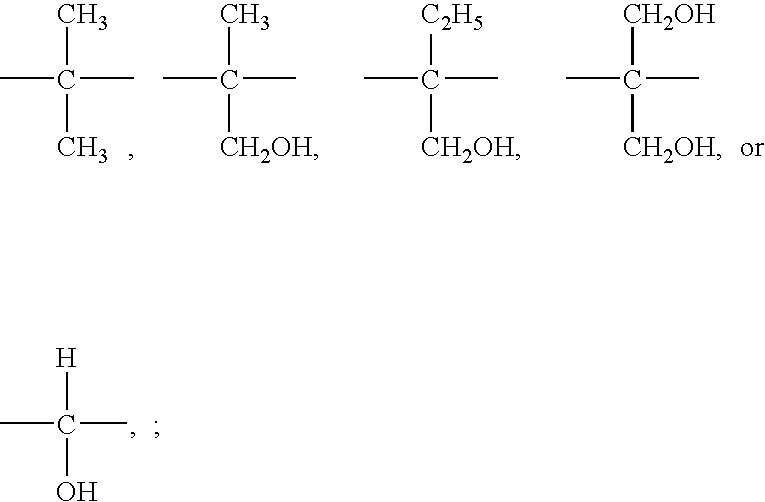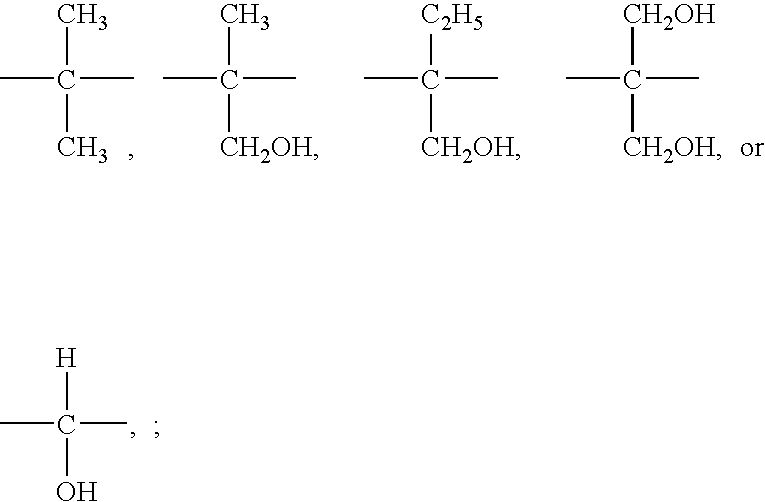Polyester polyols for polyurethane adhesives
a polyurethane and polyurethane technology, applied in the field of polyurethane hotmelt adhesives, can solve the problems of low initial cohesion of pur hot-melt adhesives, many moisture-curable hot-melt adhesives still have the drawback of low initial cohesion of adhesives, and many associated processes with various undesirable compositions, etc., to achieve the effect of improving initial bonding strength, and reducing the number of adhesives
- Summary
- Abstract
- Description
- Claims
- Application Information
AI Technical Summary
Benefits of technology
Problems solved by technology
Method used
Image
Examples
Embodiment Construction
[0028] The term “functionality” as used herein means the number of reactive groups, e.g., hydroxyl groups, in a molecule.
[0029] The term “hydroxyl value” or “OH value” or “OHV” as used herein refers to a quantitative measure of the concentration of hydroxyl groups, usually stated as mg KOH / g, i.e., the number of milligrams of potassium hydroxide equivalent to the hydroxyl groups in 1 g of substance.
[0030] The phrase “low surface energy” as utilized herein shall be understood to mean a substrate possessing a surface energy of less than 38 dyne as determined using ACCUDYNE® test marker pens from Diversified Enterprises, Claremont, N.H.
[0031] The term “phthalic acid based material” as used herein means materials containing phthalic acid or phthalic anhydride, or derivatives thereof, or the like. Examples of phthalic acid based materials include, but are not limited to, ortho-phthalic acid; isophthalic acid; terephthalic acid; alkyl esters or halides of ortho-phthalic, isophthalic, o...
PUM
| Property | Measurement | Unit |
|---|---|---|
| weight percent | aaaaa | aaaaa |
| weight percent | aaaaa | aaaaa |
| acid value | aaaaa | aaaaa |
Abstract
Description
Claims
Application Information
 Login to View More
Login to View More - R&D
- Intellectual Property
- Life Sciences
- Materials
- Tech Scout
- Unparalleled Data Quality
- Higher Quality Content
- 60% Fewer Hallucinations
Browse by: Latest US Patents, China's latest patents, Technical Efficacy Thesaurus, Application Domain, Technology Topic, Popular Technical Reports.
© 2025 PatSnap. All rights reserved.Legal|Privacy policy|Modern Slavery Act Transparency Statement|Sitemap|About US| Contact US: help@patsnap.com



